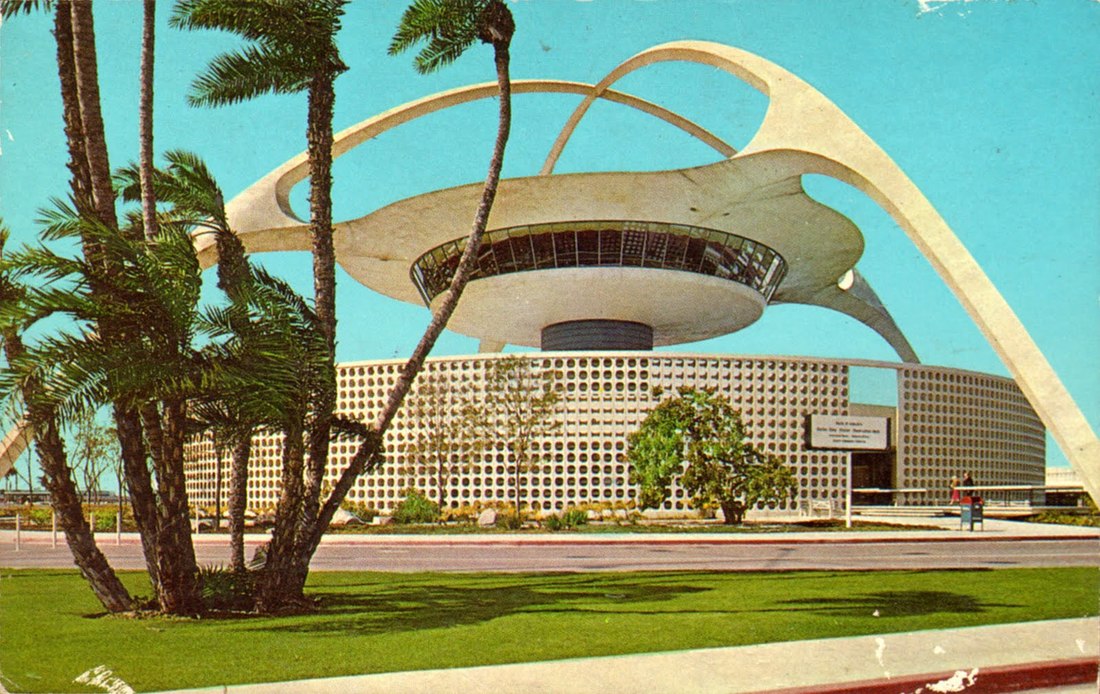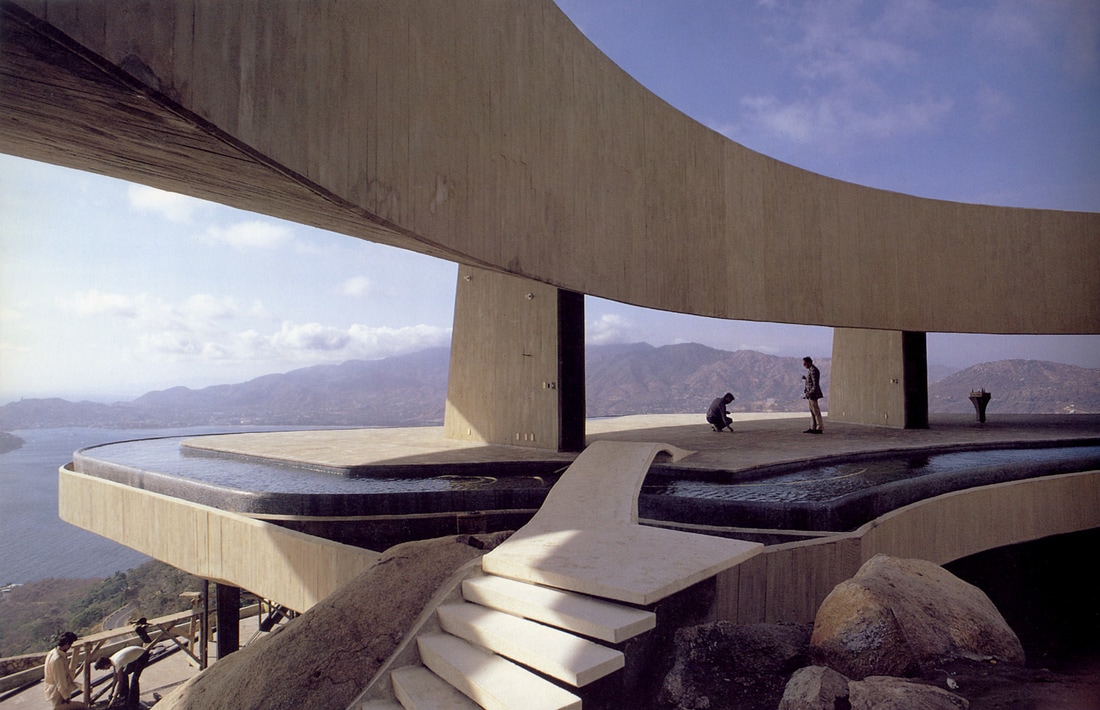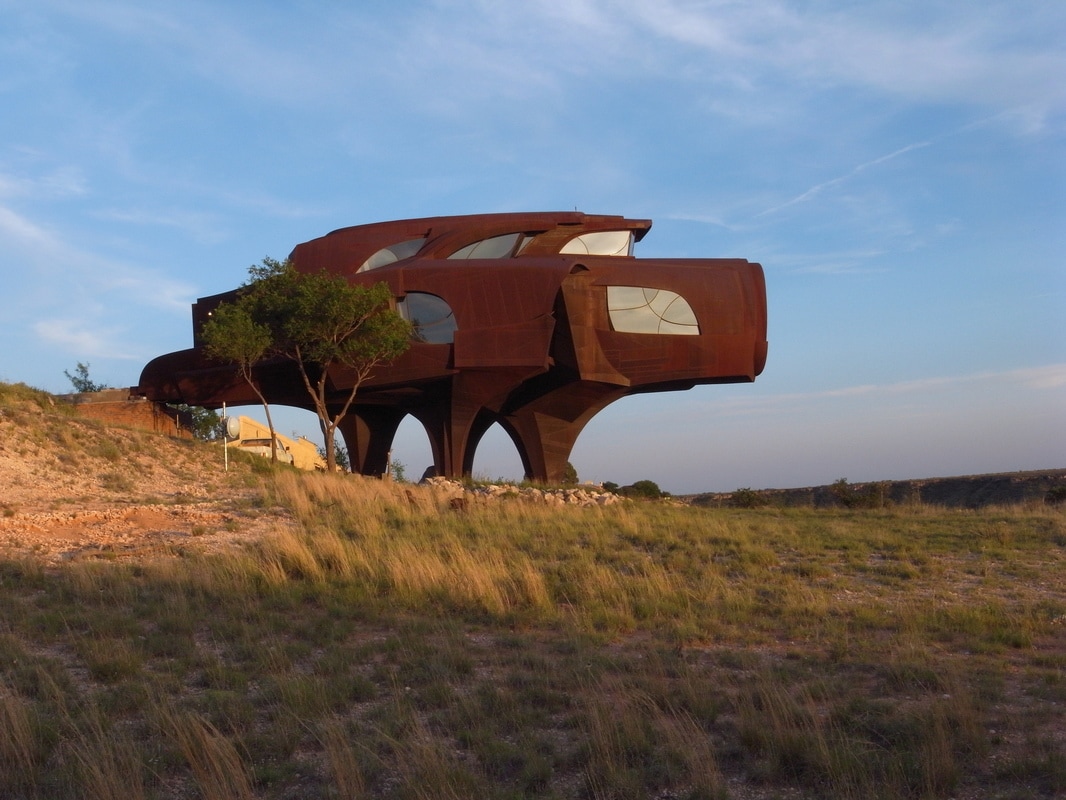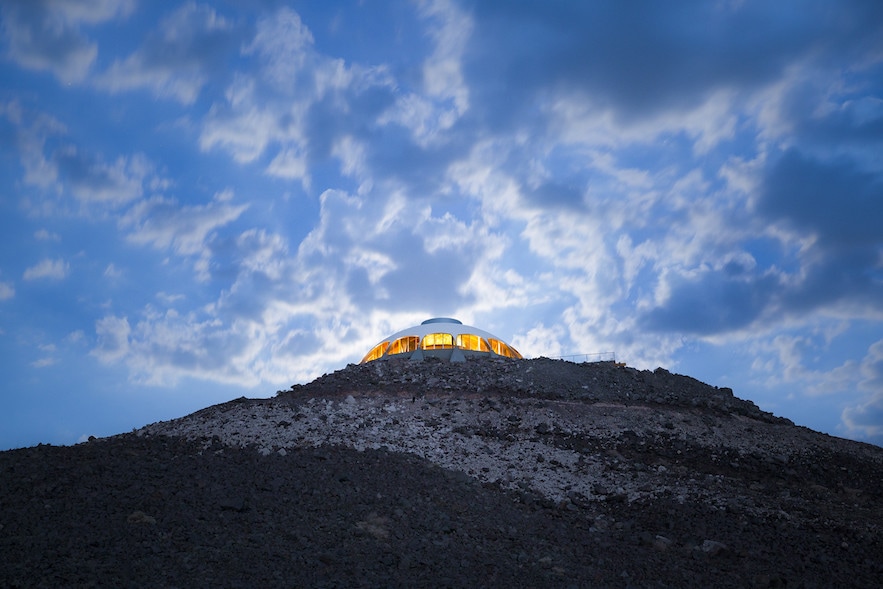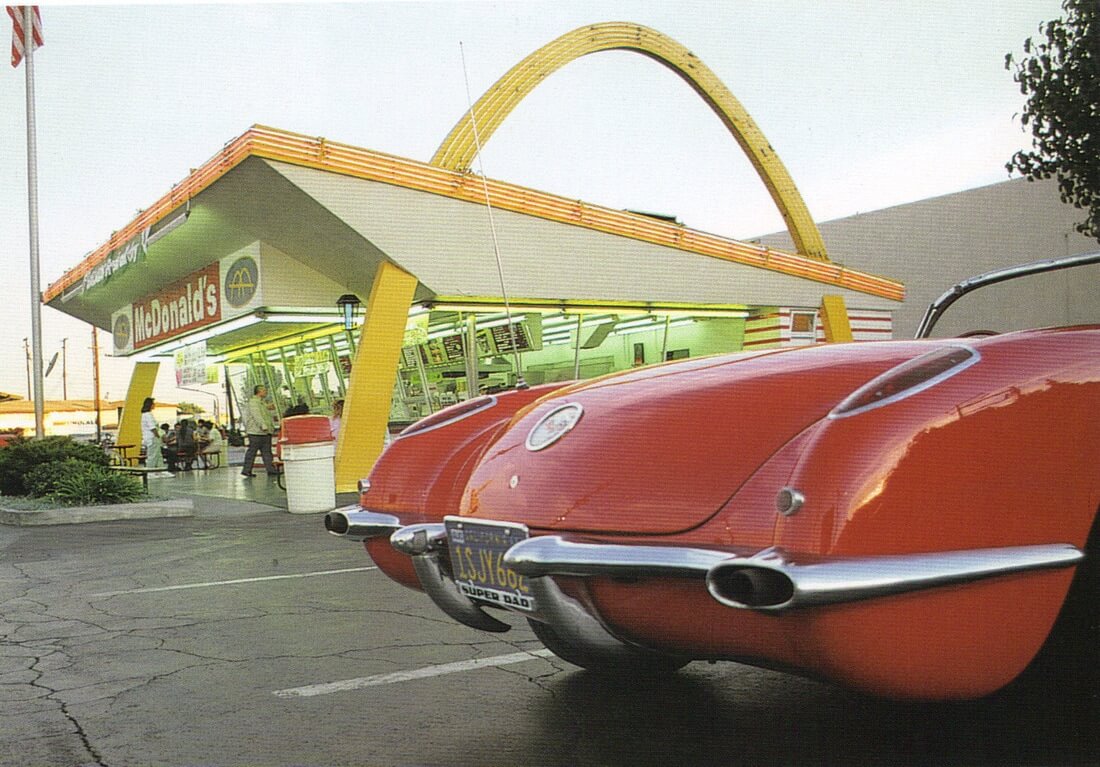While my lecture on Space Age design this week will focus on the luxurious furniture and objects, fashion, and accessories which French artists and designers created of stainless steel and other futuristic materials during the 60s and 70s, known also as the golden age of futuristic design, when it comes to architecture, I would like to focus on Los Angeles. It was here, where Googie, an architecture movement of the Space Age was born and it was named after a West Hollywood coffee shop designed in 1949 by John Lautner, one of this movement’s most ambitious architects. It was a type of architecture never seen before: sweeping arches, bold colors, buildings that looked like spaceships. This architecture was realized in a few extraordinary homes of patrons of progressive taste, such as the Elrod House in Palm Springs by John Lautner; the house Charles Deaton built for himself in Denver, CO; Chemosphere, designed in Los Angeles by John Lautner; and the so-called Steel House, which architect Robert Bruno began building in 1974 in Texas; or the Volcano House, designed in Newberry Springs California by Harold Bissner for Vard Wallace, but Googie architecture was mostly realized in coffee shops, gas stations and restaurants by such fast food chains as McDonalds.

